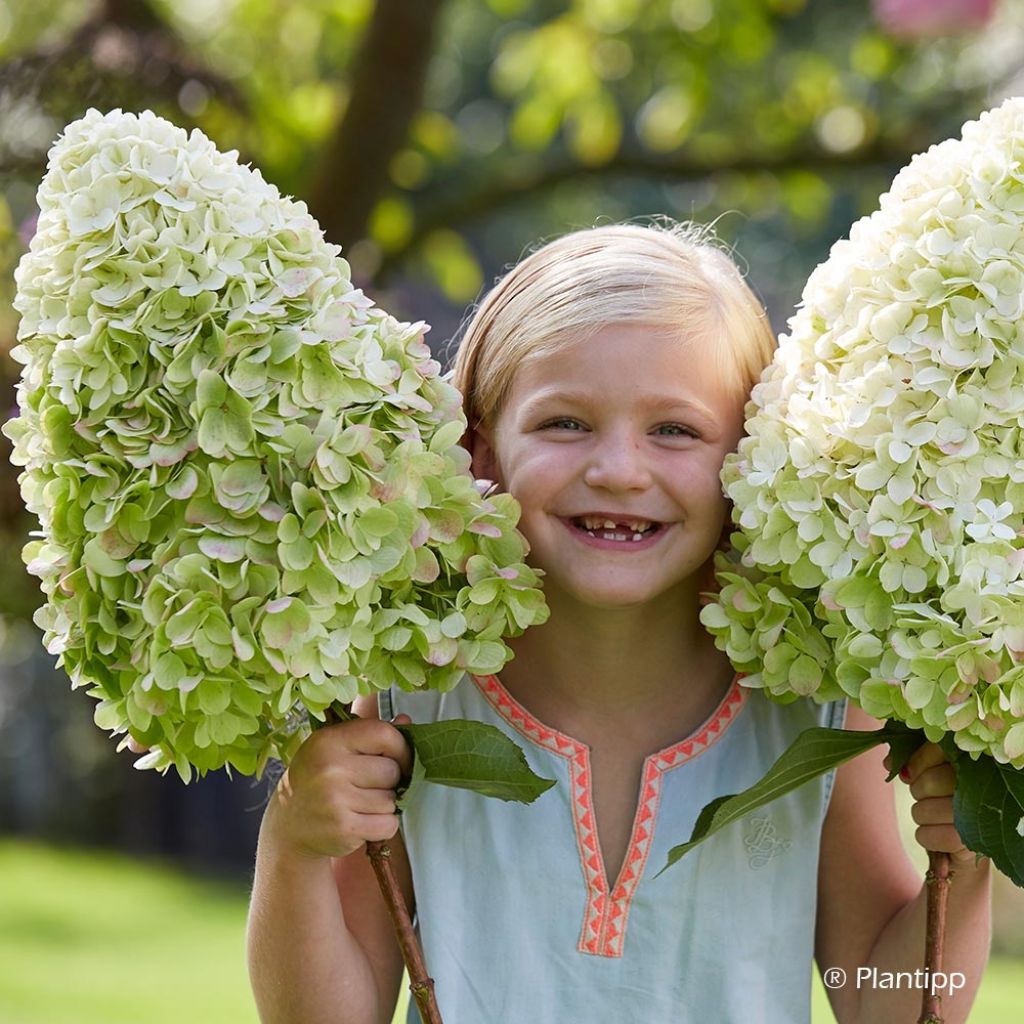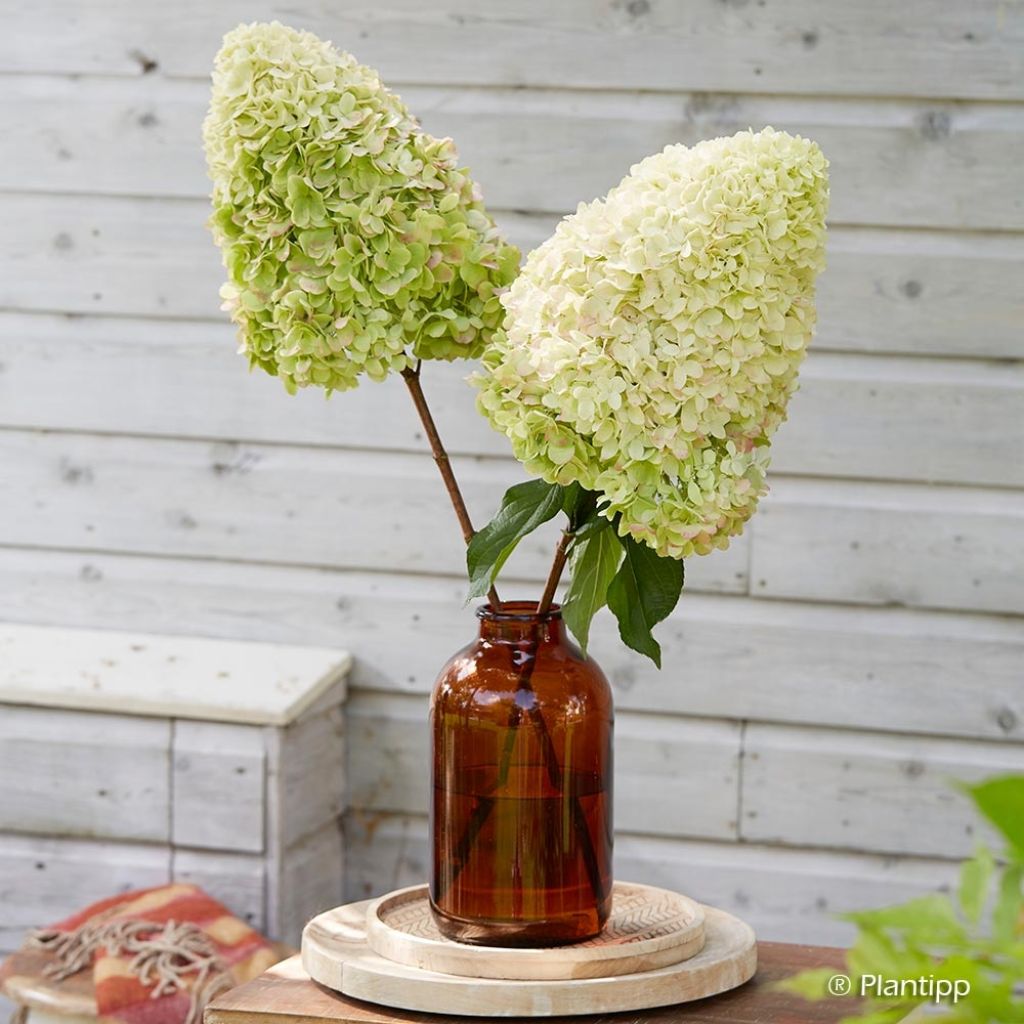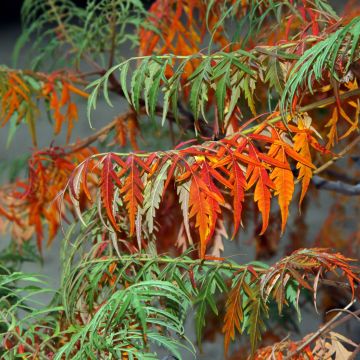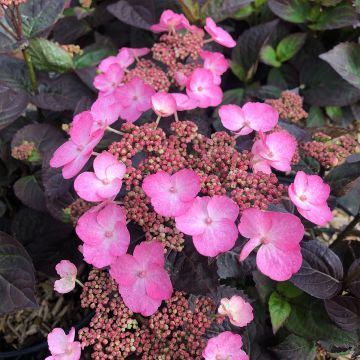

Hortensia - Hydrangea paniculata Hercules


Hortensia - Hydrangea paniculata Hercules


Hortensia - Hydrangea paniculata Hercules
Hydrangea paniculata Hercules
Hydrangea paniculata Hercules® GRHP14
Paniculate Hydrangea, Panicled Hydrangea, Panicle Hydrangea
Impeccable customer service, fast delivery to Belgium and in excellent condition. Moreover, the hydrangea exceeded my expectations. A big thank you. You truly deserve your 5 stars.
Éric, 29/10/2024
This item cannot be shipped to the selected country
Delivery charge from €5.90
More information
Schedule delivery date,
and select date in basket
This plant carries a 24 months recovery warranty
More information
We guarantee the quality of our plants for a full growing cycle, and will replace at our expense any plant that fails to recover under normal climatic and planting conditions.
From €5.90 for pickup delivery and €6.90 for home delivery
Express home delivery from €8.90.

Does this plant fit my garden?
Set up your Plantfit profile →
Description
Hydrangea paniculata 'Hercules' brings something very new to the range of paniculate hydrangeas: it is a relatively compact variety, well suited to small spaces, which astonishes with its oversized inflorescences and is convincing with its very sturdy stems that proudly carry them towards the sky, without bending under their weight. It reveals itself in summer, crowned with spectacular panicles that are full of flowers that are not quite white, shaded with very pale green and pink, and the shrub remains interesting until autumn, adorned with faded flowers that are not lacking in charm. To these exceptional ornamental qualities are added excellent hardiness and great ease of cultivation in sun or partial shade and in most soils.
Hydrangea paniculata, also called Paniculate Hydrangea, is a species belonging to the Hydrangeaceae family native to the leafy forests of China and Japan. It is particularly hardy and tolerates the sun well, as well as slightly calcareous and even occasionally dry soils if they are deep.
This new 'Hercules' variety was obtained in the Netherlands after much cross-breeding and ruthless selection. This shrub shows an erect and bushy habit. The main branches are erect, while the secondary ones are slightly arched. At maturity, this variety will reach on average 1.75 m (5 ft 8 in) in all directions, with quite rapid growth. From August, numerous very dense, conical panicles, measuring up to 40 cm (15.7 in) in length, blossom on the year's shoots. They contain numerous florets tightly packed against each other. 'Hercules' has solid, well-ramified vegetation, which easily supports the weight of the flowers. Its branches bear finely dentate, ovate leaves of a fairly dark green colour, which are strongly veined and measure 5 to 15 cm (2 to 5.9 in) long and 5 to 7 cm (2 to 2.8 in) wide. They turn yellow to orange in autumn before disappearing in winter. Paniculate hydrangeas are less susceptible to late frosts, as they generally bloom on the year's shoots.
Hydrangea paniculata distinguishes itself from its cousin, Hydrangea macrophylla, by its good tolerance of sun, sea spray and relative drought. Planted in any good garden soil without too much limestone, Hydrangea paniculata 'Hercules' shows rapid growth. It is a very hardy variety, which is planted alone, in a free hedge or in a massif, or even in clear undergrowth, mixed with other hydrangeas, cotinus or even perpetual roses to play with contrasts and shapes. You can also combine it with lilies, grasses and shrubby fuchsias. Its moderate development allows it to be incorporated into a small garden and to be grown without difficulty in a large pot on the terrace where it will live for many years with some applications of fertiliser and regular watering.
Report an error about the product description
Hydrangea paniculata Hercules in pictures




Plant habit
Flowering
Foliage
Botanical data
Hydrangea
paniculata
Hercules® GRHP14
Hydrangeaceae
Paniculate Hydrangea, Panicled Hydrangea, Panicle Hydrangea
Cultivar or hybrid
Other Hydrangea Paniculata
Planting and care
Hydrangea paniculata Hercules is not very demanding about the nature of the soil, as long as it is not too heavy, dry or chalky. It requires a sunny but not scorching exposure, in the morning sun or partial shade. When planting, install it in deeply worked soil. A good base fertiliser (horn or dried blood) will promote the recovery of your plant and nourish it without risk of burning. If your soil tends to be dry, mix our STOCKOSORB® water retainer with the soil when filling in the planting hole and provide a watering basin on the surface.
At the end of summer, we advise you not to cut the dry panicles which will protect the terminal shoots of the branches in winter; you should cut all the dry flowers at the end of February or on the first summer days. The plant's spring vegetation appears rather late.
Hydrangea Paniculata: these shrubby hydrangeas with elongated inflorescences are a bit more resistant to drought and can easily be planted even in non-acidic soil. When planted in the sun, their inflorescences change colour in the autumn.
Hydrangea paniculata Hercules should be pruned at the end of winter to produce more inflorescences and maintain a dense habit. Apart from deliberately limiting the expansion of the bush if it has become too large, you should take care not to remove the two-year-old branches, as doing so will compromise the development of the plant.
Planting period
Intended location
Care
-
, onOrder confirmed
Reply from on Promesse de fleurs
Summer-flowering shrubs
Haven't found what you were looking for?
Hardiness is the lowest winter temperature a plant can endure without suffering serious damage or even dying. However, hardiness is affected by location (a sheltered area, such as a patio), protection (winter cover) and soil type (hardiness is improved by well-drained soil).

Photo Sharing Terms & Conditions
In order to encourage gardeners to interact and share their experiences, Promesse de fleurs offers various media enabling content to be uploaded onto its Site - in particular via the ‘Photo sharing’ module.
The User agrees to refrain from:
- Posting any content that is illegal, prejudicial, insulting, racist, inciteful to hatred, revisionist, contrary to public decency, that infringes on privacy or on the privacy rights of third parties, in particular the publicity rights of persons and goods, intellectual property rights, or the right to privacy.
- Submitting content on behalf of a third party;
- Impersonate the identity of a third party and/or publish any personal information about a third party;
In general, the User undertakes to refrain from any unethical behaviour.
All Content (in particular text, comments, files, images, photos, videos, creative works, etc.), which may be subject to property or intellectual property rights, image or other private rights, shall remain the property of the User, subject to the limited rights granted by the terms of the licence granted by Promesse de fleurs as stated below. Users are at liberty to publish or not to publish such Content on the Site, notably via the ‘Photo Sharing’ facility, and accept that this Content shall be made public and freely accessible, notably on the Internet.
Users further acknowledge, undertake to have ,and guarantee that they hold all necessary rights and permissions to publish such material on the Site, in particular with regard to the legislation in force pertaining to any privacy, property, intellectual property, image, or contractual rights, or rights of any other nature. By publishing such Content on the Site, Users acknowledge accepting full liability as publishers of the Content within the meaning of the law, and grant Promesse de fleurs, free of charge, an inclusive, worldwide licence for the said Content for the entire duration of its publication, including all reproduction, representation, up/downloading, displaying, performing, transmission, and storage rights.
Users also grant permission for their name to be linked to the Content and accept that this link may not always be made available.
By engaging in posting material, Users consent to their Content becoming automatically accessible on the Internet, in particular on other sites and/or blogs and/or web pages of the Promesse de fleurs site, including in particular social pages and the Promesse de fleurs catalogue.
Users may secure the removal of entrusted content free of charge by issuing a simple request via our contact form.
The flowering period indicated on our website applies to countries and regions located in USDA zone 8 (France, the United Kingdom, Ireland, the Netherlands, etc.)
It will vary according to where you live:
- In zones 9 to 10 (Italy, Spain, Greece, etc.), flowering will occur about 2 to 4 weeks earlier.
- In zones 6 to 7 (Germany, Poland, Slovenia, and lower mountainous regions), flowering will be delayed by 2 to 3 weeks.
- In zone 5 (Central Europe, Scandinavia), blooming will be delayed by 3 to 5 weeks.
In temperate climates, pruning of spring-flowering shrubs (forsythia, spireas, etc.) should be done just after flowering.
Pruning of summer-flowering shrubs (Indian Lilac, Perovskia, etc.) can be done in winter or spring.
In cold regions as well as with frost-sensitive plants, avoid pruning too early when severe frosts may still occur.
The planting period indicated on our website applies to countries and regions located in USDA zone 8 (France, United Kingdom, Ireland, Netherlands).
It will vary according to where you live:
- In Mediterranean zones (Marseille, Madrid, Milan, etc.), autumn and winter are the best planting periods.
- In continental zones (Strasbourg, Munich, Vienna, etc.), delay planting by 2 to 3 weeks in spring and bring it forward by 2 to 4 weeks in autumn.
- In mountainous regions (the Alps, Pyrenees, Carpathians, etc.), it is best to plant in late spring (May-June) or late summer (August-September).
The harvesting period indicated on our website applies to countries and regions in USDA zone 8 (France, England, Ireland, the Netherlands).
In colder areas (Scandinavia, Poland, Austria...) fruit and vegetable harvests are likely to be delayed by 3-4 weeks.
In warmer areas (Italy, Spain, Greece, etc.), harvesting will probably take place earlier, depending on weather conditions.
The sowing periods indicated on our website apply to countries and regions within USDA Zone 8 (France, UK, Ireland, Netherlands).
In colder areas (Scandinavia, Poland, Austria...), delay any outdoor sowing by 3-4 weeks, or sow under glass.
In warmer climes (Italy, Spain, Greece, etc.), bring outdoor sowing forward by a few weeks.























































